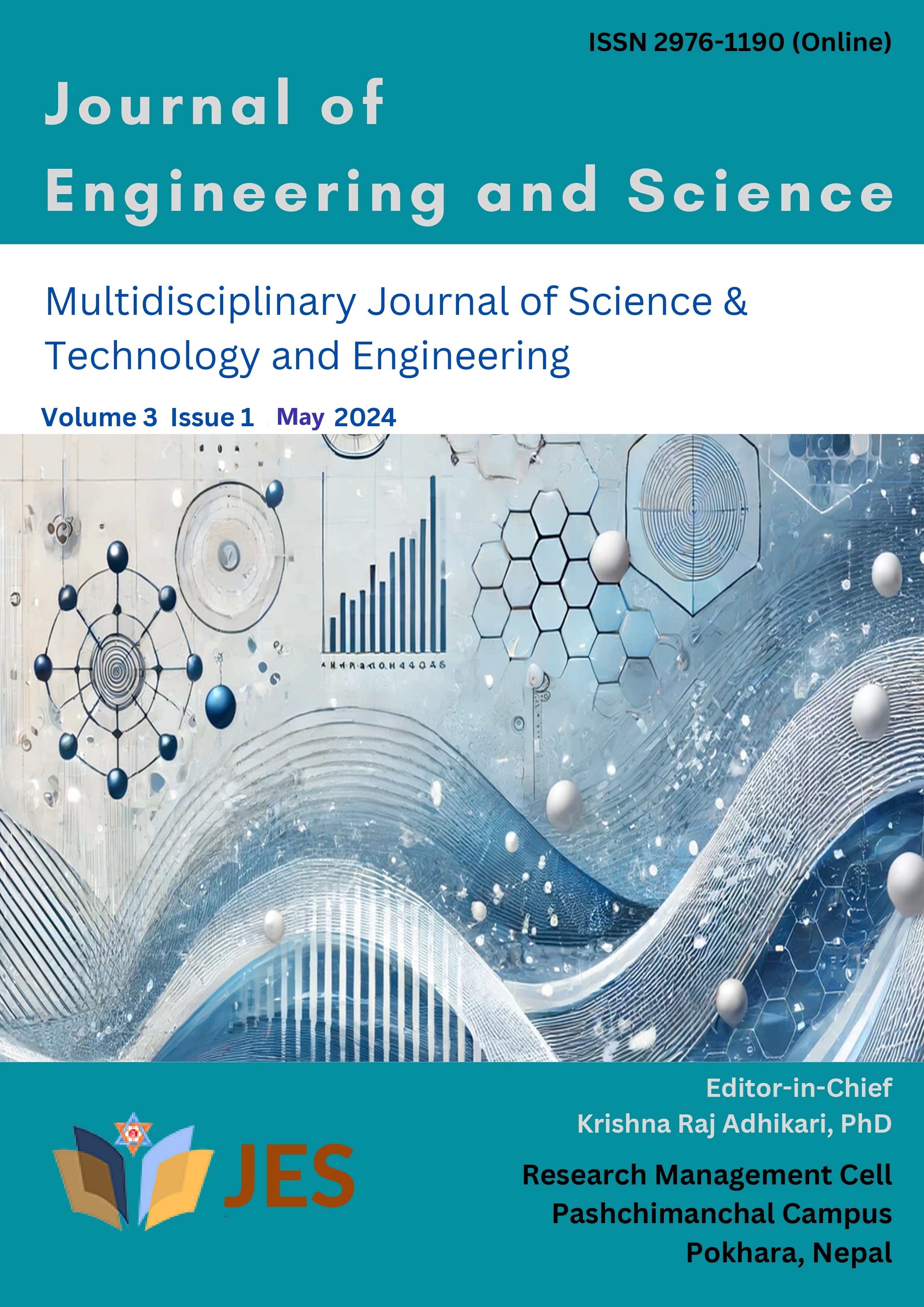Computational Evaluation of Pulsating Heat Pipe for Fluid Flow Behavior and its Thermal Performance
DOI:
https://doi.org/10.3126/jes2.v3i1.66245Keywords:
Computational Fluid Dynamics, Single Loop Heat Pipe, Thermal resistanceAbstract
Computational fluid analysis of a single circuit heat pipe was undertaken to ascertain the thermal efficiency of water at various fill ratios, specifically 40%, 50%, and 60% under varying heating conditions. The analysis employed the ANSYS Fluent computational fluid dynamics software, utilizing a k-epsilon to the heat pipe as the solver. The analysis was carried out on a copper tube with an internal diameter measuring 3/16 inches. During the analysis, the thermal inflow at the adiabatic region was adjusted to zero, while the condenser region’s temperature remained constant at 25°C. Meanwhile, the heat input at the evaporator region was systematically adjusted to 105°C, 110°C, 115°C, and 120°C. Key Performance characteristics of heat pipe i.e. thermal resistance, and water volume fraction were evaluated during analysis. The temperature variations noted in both regions affirmed that the pulsating pipe’s performance was influenced by the phase transition between liquid and vapor. Furthermore, the concentration of volume within the evaporator section was monitored, confirming the presence of a dual-phase phenomenon within the heat pipe. Through the analysis, it was noted that the thermal resistance of the water is minimized at a 50% fill ratio for each level of heat input. Notably, the promising results were obtained at an input temperature of 120°C with a value of 1.025°C /W which was 7.3% and 9.8% lower than thermal resistance at 40% and 60% fill ratios, respectively. The reduced thermal resistance in this scenario is attributed to the flow dynamics within the capillary, propelled by rapid phase change mechanisms. This shows the importance of Pulsating Heat Pipes (PHPs) in thermal control, as well as the intricacies of their operating mechanisms. Experimental and theoretical investigations have investigated numerous elements influencing PHP performance, with numerical modeling providing insight into thermal resistance and water volume fraction dynamics under varying heating temperatures and fill ratios.
Downloads
Downloads
Published
How to Cite
Issue
Section
License
Copyright (c) 2024 The Author(s)

This work is licensed under a Creative Commons Attribution 4.0 International License.
CC BY: This license allows reusers to distribute, remix, adapt, and build upon the material in any medium or format, so long as attribution is given to the creator. The license allows for commercial use.




